illegal immigration
Court rules in favor of Texas in razor wire case
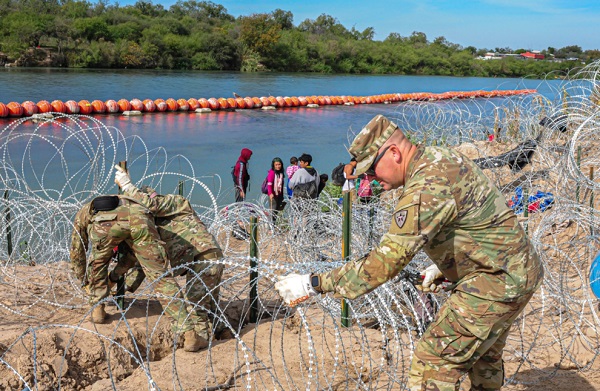
From The Center Square
By
Attorney General Ken Paxton also said the ruling was a “huge win for Texas…. We sued immediately when the federal government was observed destroying fences to let illegal aliens enter, and we’ve fought every step of the way for Texas sovereignty and security.”
A panel of three judges on the Fifth U.S. Circuit Court of Appeals ruled in favor of Texas in a lawsuit filed over its concertina wire barriers.
The court ruled 2-1 in a case that may set the tone for two other cases before the court related to Texas’ border security operations.
Circuit Judge Stuart Kyle Duncan wrote for the majority, with Judge Don Willett joining him. Judge Irma Carrillo Ramirez dissented, arguing Texas did not meet “its burden to show a waiver of sovereign immunity or a likelihood of success on the merits.”
The ruling was issued 13 months after Texas sued the Biden administration after it destroyed concertina wire barriers it erected on state land.
The court was asked to decide whether Border Patrol agents can legally cut concertina wire fencing erected by Texas law enforcement along its border with Mexico. The Biden administration ordered Gov. Greg Abbott to remove it, arguing he was interfering with federal immigration operations. Abbott refused, arguing that the administration was facilitating illegal entry and violating federal law. In response, the administration ordered Border Patrol agents to use a bulldozer and remove wire fencing. Abbott sued, arguing they were destroying Texas property and Texas has the legal authority to erect barriers on state land.
Texas requested the district court to issue an injunction to block Border Patrol agents from removing the fencing, which it denied despite agreeing with Texas’ arguments.
The court “agreed with Texas on the facts: not only was Border Patrol unhampered by the wire, but its agents had breached the wire numerous times ‘for no apparent purpose other than to allow migrants easier entrance further inland,’” the Fifth Circuit’s 75-page ruling states. However, it denied Texas’ request arguing the federal government had sovereign immunity.
Texas next appealed to the Fifth Circuit, which granted the injunction pending appeal. The Biden administration appealed to the U.S. Supreme Court, which vacated the injunction without any stated reason.
The Supreme Court’s ruling didn’t deter Texas, which continued building and erecting concertina wire in the Eagle Pass area, and later established the military base for Texas’ border security mission, Operation Lone Star, there. OLS officers also expanded concertina wire barriers in other key areas along its border.
“The Texas National Guard continues to hold the line in Eagle Pass,” Abbott said at the time. “Texas will not back down from our efforts to secure the border in Biden’s absence.”
The three-judge panel ruled that Texas “is entitled to a preliminary injunction.” The ruling states that the Biden administration “clearly waived sovereign immunity as to Texas’s state law claims under § 702 of the Administrative Procedure Act,” which it says “is supported by a flood of uncontradicted circuit precedent to which the United States has no answer.”
The Fifth Circuit also rejected other Biden administration arguments, including that Texas was erecting barriers to safeguard its own property, not to “regulate Border Patrol.”
The ruling reversed the district court’s judgment and granted Texas’ preliminary injunction. The court also prohibited the federal government from “damaging, destroying, or otherwise interfering with Texas’s c-wire fence in the vicinity of Eagle Pass,” including Shelby Park, which Abbott shut down after learning that the Biden administration was using it as a staging ground to facilitate illegal entry into the US.
Abbott lauded the Fifth Circuit ruling, saying, “The federal court of appeals just ruled that Texas has the right to build the razor wire border wall that we have constructed to deny illegal entry into our state and that Biden was wrong to cut our razor wire. We continue adding more razor wire border barrier.”
Attorney General Ken Paxton also said the ruling was a “huge win for Texas.”
“The Biden Administration has been enjoined from damaging, destroying, or otherwise interfering with Texas’s border fencing. We sued immediately when the federal government was observed destroying fences to let illegal aliens enter, and we’ve fought every step of the way for Texas sovereignty and security.”
With weeks left in the administration, the concertina wire barrier case is unlikely to be appealed for a full court review.
In May, the court is scheduled to hear arguments on a lawsuit related to Texas’ marine barriers in the Rio Grande River, unless the case is dropped by the incoming Trump administration. Another case before the court is over Texas’ border security law, SB 4.
illegal immigration
ICE raids California pot farm, uncovers illegal aliens and child labor
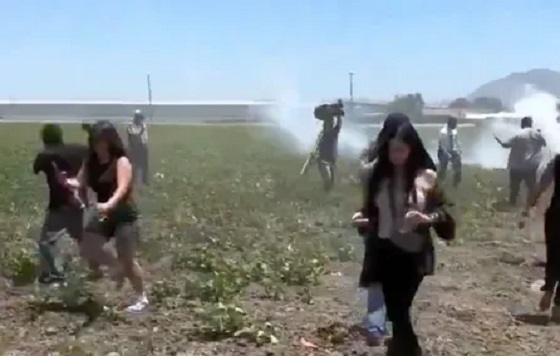
Quick Hit:
ICE raided a California cannabis farm Thursday suspected of employing illegal immigrants, uncovering 10 underage workers — including 8 unaccompanied minors. The operation sparked protests, but federal officials defended the action as a necessary crackdown on illegal labor and child exploitation.
Key Details:
- ICE agents executed a lawful raid at Glass House Farms in Camarillo, targeting illegal immigrant laborers employed at the state-licensed cannabis operation.
- Ten underage illegal immigrants were found working at the site — eight of them unaccompanied minors — prompting a federal investigation into potential child labor violations.
- Protesters attempted to interfere with the operation and were dispersed by federal agents using crowd control measures; multiple arrests and injuries were reported.
🚨BREAKING: ICE just swarmed Ventura County fields, hauling away the very farm workers who keep America’s produce aisles stocked.
We’re arresting assets; treating the backbone of our food chain like a threat. That’s not “border security.” That’s self-sabotage in uniform. pic.twitter.com/GgZvnXbVsd
— Brian Allen (@allenanalysis) July 10, 2025
Diving Deeper:
Federal immigration agents executed a large-scale raid Thursday at a cannabis farm in Camarillo, California, targeting illegal immigrant laborers and uncovering possible child labor violations. The operation, led by Immigration and Customs Enforcement (ICE), took place at Glass House Farms, a state-licensed marijuana facility that remains illegal under federal law.
Dozens of agents stormed the property with a federal warrant, encountering resistance from left-wing protesters who attempted to disrupt the operation. Agents responded with tear gas and smoke devices, and helicopters were deployed to ensure no suspects could flee or hide in nearby fields. Authorities later confirmed that 10 minors were working at the facility—eight of whom were unaccompanied illegal aliens.
Despite clear evidence of immigration and labor violations, California Democrats rushed to attack the enforcement action. Governor Gavin Newsom lashed out on social media, posting video of people running from the scene. Rep. Salud Carbajal called the raid “deplorable,” complaining about the use of tactical gear.
Customs and Border Protection Commissioner Rodney Scott pushed back, calling out Newsom directly. “Here’s some breaking news: 10 juveniles were found at this marijuana facility – all illegal aliens, 8 of them unaccompanied,” he posted on X. “It’s now under investigation for child labor violations.”
While California officials cried foul, ICE defended the operation as necessary and lawful. The raid is part of a broader push under President Trump to enforce federal immigration laws and shut down operations that exploit illegal labor to undercut American workers.
The clash in Camarillo follows similar enforcement actions earlier this week in Los Angeles, where ICE also faced hostility from local officials. Nonetheless, the Trump administration appears undeterred, making clear that sanctuary policies will not shield illegal activity from federal scrutiny.
Crime
Sweeping Boston Indictment Points to Vast Chinese Narco-Smuggling and Illegal Alien Labor Plot via Mexican Border
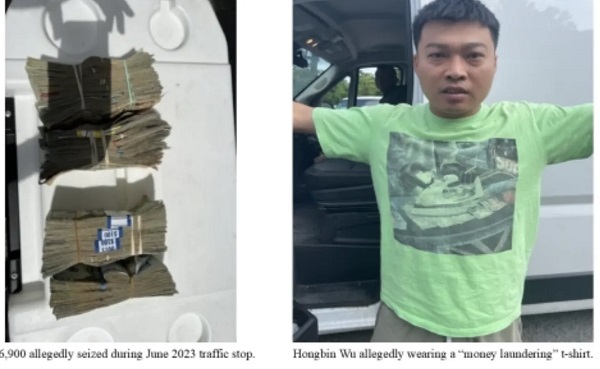
 Sam Cooper
Sam Cooper
Case details a pipeline from China through Mexico, trapping trafficked illegal migrants as indentured workers in a sweeping drug network.
In a sweeping indictment that tears into an underworld of Chinese narco infiltration of North American cities — including the smuggling of impoverished Chinese nationals across the Mexican border to work as drug debt slaves in illegal drug houses — seven Chinese nationals living in Massachusetts stand accused of running a sprawling, multimillion-dollar marijuana trafficking and money laundering network across New England.
The backdrop of the human smuggling allegations stretches back to 2020, as an unprecedented wave of illegal Chinese migrants surged across the U.S. border with Mexico — a surge that peaked in 2024 under the Biden administration before the White House reversed course. This explosive migration trend became a flashpoint in heated U.S. election debates, fueling concerns over border security and transnational organized crime.
Six of the accused, including alleged ringleader Jianxiong Chen of Braintree, were arrested this week in coordinated FBI raids across Massachusetts. The border exploitation schemes match exactly with decades-long human smuggling and Chinese Triad criminal pipelines into America reported by The Bureau last summer, based on leaked intelligence documents filed by a Canadian immigration official in 1993. A seventh suspect in the new U.S. indictment, Yanrong Zhu, remains a fugitive and is believed to be moving between Greenfield, Massachusetts, and Brooklyn, New York.
The case paints a striking portrait of China-based criminal organizations operating behind the quiet facades of upscale American suburban properties. Prosecutors allege the defendants owned or partnered with a network of sophisticated indoor grow houses hidden inside single-family residences in Massachusetts, Maine, and beyond, producing kilogram-scale shipments of marijuana. According to court documents, the marijuana was sold in bulk to distributors across the Northeast, and the profits — amounting to millions — were funneled into luxury real estate, cars, jewelry, and further expansion of their illicit operations.
“During a search of [ringleader Chen’s] home in October 2024, over $270,000 in cash was allegedly recovered from the house and from a Porsche in the driveway,” the indictment alleges, “as well as several Chinese passports and other identification documents inside a safe.”
According to the indictment, Chen’s cell phone data confirmed his personal role in orchestrating smuggling logistics and controlling workers. Additional searches of homes where co-defendants lived yielded over 109 kilograms of marijuana, nearly $200,000 in cash, and luxury items including a $65,000 gold Rolex with the price tag still attached.
A photo from the indictment, humorously but damningly, shows alleged ring member Hongbin Wu, 35, wearing a green “money laundering” T-shirt printed with an image of a hot iron pressing U.S. dollar bills on an ironing board — a snapshot that encapsulates the brazenness of the alleged scheme.
Key to FBI allegations of stunning sophistication tying together Chinese narcos along the U.S. East Coast with bases in mainland China is a document allegedly shared among the conspirators.
“The grow house operators maintained contact with each other through a list of marijuana cultivators and distributors from or with ties to China in the region called the ‘East Coast Contact List,’” the indictment alleges.
Investigators say the conspiracy reveals a human smuggling component directly tied to China’s underground migration and debt bondage networks, mirroring exactly the historic intelligence from Canadian and U.S. Homeland Security documents reported by The Bureau last summer.
The alleged leader, 39-year-old Jianxiong Chen, is charged with paying to smuggle Chinese nationals across the Mexican border, then forcing them to work in grow houses while withholding their passports until they repaid enormous smuggling debts.
“Data extracted from Chen’s cell phone allegedly revealed that he helped smuggle Chinese nationals into the United States — putting the aliens to work at one of the grow houses he controlled,” U.S. filings say.
“This case pulls back the curtain on a sprawling criminal enterprise that exploited our immigration system and our communities for personal gain,” said U.S. Attorney Leah Foley. “These defendants allegedly turned quiet homes across the Northeast into hubs for a criminal enterprise — building a multi-million-dollar black-market operation off the backs of an illegal workforce and using our neighborhoods as cover.”
The arrests come amid a surge of Chinese migrants entering the U.S. through Mexico, part of a pattern previously exposed in Canadian diplomatic and intelligence reporting. In 1993, a confidential Canadian government study, “Passports of Convenience,” warned that Chinese government officials, in collusion with Triads and corrupt Latin American partners, were driving a multi-billion-dollar human smuggling business. That report predicted that tens of thousands of migrants from coastal Fujian province would flood North America, empowered by Beijing’s tacit support and organized crime’s global reach.
It also warned that mass migration from China in the 1990s came during a time of political upheaval, a trend that has apparently re-emerged while President Xi Jinping’s economic and political guidance has been increasingly questioned among mainland citizens, particularly since the Covid-19 pandemic crisis and lockdowns inside China.
The 1993 report, obtained and analyzed exclusively by The Bureau, described how the Triads — particularly those connected with Chinese Communist networks in Fujian — would leverage human smuggling to extend their influence into American cities. The migrants, often saddled with debts of $50,000 or more, became trapped in forced labor, prostitution, or drug networks, coerced to repay their passage fees.
“Alien smuggling is closely linked to narcotics smuggling; many of the persons smuggled in have to resort to prostitution or drug dealing to pay the smugglers,” the 1993 Canadian immigration report says.

Citing legal filings in one U.S. Homeland Security case, it says a Triad member who reportedly smuggled 150 Fujianese migrants into New York stated that if fees aren’t paid “the victims are often tortured until the money is paid.”
Supporting these early warnings, a 1995 U.S. Department of Justice report echoed the Canadian findings, stating that “up to 100,000 Chinese aliens are smuggled into the United States each year,” with 85 percent originating from Fujian. The DOJ report also cited allegations of “negotiations between the Sun Yee On Triad and the Mainland Chinese Government,” suggesting that smuggling and criminal infiltration were tolerated — if not orchestrated — to extend China’s economic and political influence abroad.
That report added American investigators and immigration officials concluded it was nearly impossible to counter waves of illegal immigration from China with deportation orders, and the government should focus on “the larger menace working its way into U.S. cities: Chinese transnational criminal organizations.”
“To combat the growing threat of Asian organized crime in the West,” it says, “law enforcement officials must tackle this new global problem through an understanding of the Triad system and the nature of its threat to Western countries.”
In New England, the Braintree indictment shows how those old predictions have not only materialized but scaled up.
These networks operate by embedding Chinese nationals into illicit industries in North America, from black-market cannabis cultivation to high-end money laundering. Once inside, they channel profits back through complex underground banking channels that tie the North American drug economy to China’s export-driven cash flows and, ultimately, to powerful actors in Beijing.
In recent years, Maine has emerged as a strategic hotspot for illicit Chinese-controlled marijuana operations. As The Bureau has reported, the state’s vast rural areas, lax local oversight, and proximity to East Coast urban markets have made it a favored location for covert grow houses.
-

 COVID-1921 hours ago
COVID-1921 hours agoFDA requires new warning on mRNA COVID shots due to heart damage in young men
-

 Business19 hours ago
Business19 hours agoCarney’s new agenda faces old Canadian problems
-

 Daily Caller16 hours ago
Daily Caller16 hours agoBlackouts Coming If America Continues With Biden-Era Green Frenzy, Trump Admin Warns
-
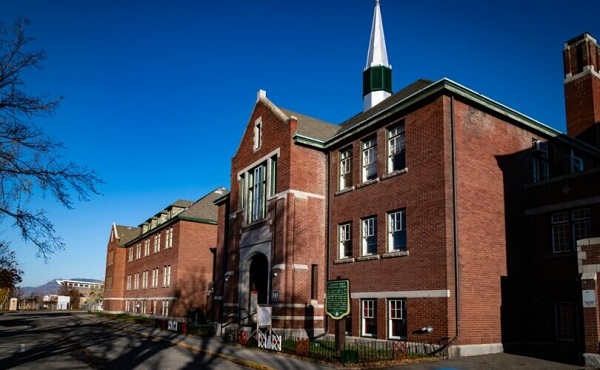
 Indigenous20 hours ago
Indigenous20 hours agoInternal emails show Canadian gov’t doubted ‘mass graves’ narrative but went along with it
-

 Bruce Dowbiggin22 hours ago
Bruce Dowbiggin22 hours agoEau Canada! Join Us In An Inclusive New National Anthem
-

 Business2 days ago
Business2 days agoCBC six-figure salaries soar
-

 Addictions2 days ago
Addictions2 days agoCan addiction be predicted—and prevented?
-
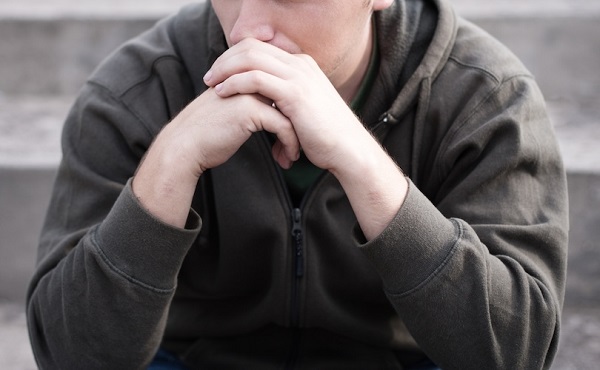
 Addictions2 days ago
Addictions2 days agoMore young men want to restrict pornography: survey



